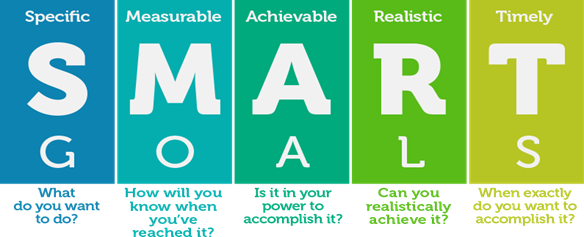Introduction
Commitment is defined by the Oxford Advanced Learner’s Dictionary as “a promise to do something or to behave in a particular way”.
While the definition uses the words ‘promise’ and ‘behavior’, it leaves individuals to determine the value they put on the two words. That makes the definition light and mild in a world so marred by individualism. Much more than that though, this text desires to look at commitment as an undivided and undistracted attention towards something, somebody, a goal, a value, or a vision.
Before going on to give other parameters to commitment, the first task is to explain each of the words given in this new definition:
Explanation of the Adopted Definition
Undivided and undistracted attention is best understood by watching a hunter seeking a game. One cannot think of a better hunter than the cat.
Taking time to observe a cat focusing on a prey, one notices the strategy it takes to choose a position. It ensures that this chosen position is calm, and permitting it to pounce, once the prey is noted. The position is one that attracts the unexpecting prey.
This position is supported by the posture that the hunter adopts. On the one part the cat remains low, so as not to overly distract its prey, and at the same time setting the limb muscles to facilitate a long, yet fast pounce. The cat also remains quiet; very quiet that unless you had noticed it before, you may not realize its presence.
Her eyes, ears, and nose are all set to perceive any presence and position of the prey.
This attention is towards something, somebody, a goal, a value or a vision.
Something or somebody is physical. This means that one can perceive and interact with this other.

The interactions use any of the five senses: eyes, ears, smell, touch, and feel.
The degree to which the interaction is done, is highly dependent on the intentions of the interactions.
These intentions also determine the level of attention granted.
The level of mildness and temporality, that is granted to the interaction, determines the level of the attention, hence the commitment.
The attention given by a nature swimmer to a slug in water, is not the same attention given to an approaching crocodile or hippo. The attention given to a pedestrian, by a driver, cannot be compared to that given to a spouse.
Attention is also given to a goal.
Goals are linked to aims and to objectives. Aims, objectives and goals, in that order, of intensity and severity, are futuristic.
An individual or a group of persons, acknowledge their present position, with its challenges and gains. They then appreciate growth towards another, presumably better position. Aware of the efforts needed, they lay down strategies towards realizing the new position. These strategies need to be specific, measurable, attainable, realistic and time bound.

The strategies also need to be clear on what action is to be carried out, who is to carry out the action, and who is to benefit. Also, it is important to be clear on where the activity shall be carried out, when it shall be done, and how (material, method) needed to execute the strategies.
The planners and executors also need to be very clear on why (reasons) this strategy is being carried out. The severity of the goal, the effect that it is meant to have, the resources needed to realize the goal, the time frame within which the goal is to be realized, and the length of the effect that the goal is going to have, all contribute to the degree of attention required in the process. In this way, the level of commitment varies.
Attention can be towards the attainment or the realization of a value.
A value is that which one desires. The desire of the value could also be by a community. Both goals and values, are in the human cognition. This means that they are not in the docket of animals. In addition, goals and values also have identifiable indicators (perceivable actions/behavior) linked to the attainment of the goal/value.
However, values tend to have a moral judgment, an aspect not necessarily present in goals. On that note, goals are easily linked to the Id (individual pleasure) and the Ego (human relational level) while values are in the realm of the superego (Going beyond human relation to that of the Divine; what is good in itself).
Values seek to attain more universal good. Based on this therefore, values call for greater attention and greater commitment.

In Eisenhower’s quadrant, values tend to be at the level of not necessary but important.
If not well considered, persons whose focus is on materialism and consumerism, fail to ever seek value.
It is possible to appear quite successful in the human eyes, yet remain very unhappy, due to alack of value proposition.
Attention is also geared towards a vision.
The following story helps explain the understanding of a vision that this writeup adopts.
There was once an elderly man whose business was to take grocery and cereals to a nearby market. To ease his operations, he had a donkey drawn cart. One morning, he woke up as was his habit and headed for the market. He carried on with his business of distributing his goods as the donkey and the cart waited at the yard. Due to the day's heat and perhaps the fatigue, the donkey decided to lie down awaiting his master. In the late afternoon as the sun was beginning to set, he came to his donkey and wanted it to start on its way home. He executed the usual gesture commanding the animal to stand up and start the journey, but this animal did not respond. He turned to beating it so that it could obey, but to no avail. The tussle went on for a few minutes and was becoming a little frustrating for the old man. Soon, a young lad appeared and offered to help. The old man, having been so frustrated desired to see what the young man would do, that would challenge his many years of experience. The young boy asked the old man to provide a juicy carrot. This he easily did, from the multitude of sellers that was beginning to get attracted to the spectacle. The young boy, got hold of the gift, tied it to a long stick that he had with him. He jumped onto the stationery cart and stretched the stick so that the carrot dangled right in front of the tired eyes of the donkey. To this, the donkey realized that a meal had been offered. It attempted to reach the carrot still from a lying position but this was not possible. Oblivious of the trick, it jumped on to its feet still in the attempt. The more forward it moved, the more the carrot maintained its attractive distance of dangling just above its eyes. It was on its feet and on its way. The old man had to be helped to quickly jump onto the moving wagon. Amazement never ceased to grasp the old man and the spectators who had learnt some new trick from just a lad.
A vision is a carrot dangling right above our eyes.
It grants us the needed impetus to keep moving. It is never too far as to get us giving up. Rather it is just at the right distance. It is also quite juicy and attractive, and often is needed when we are too exhausted to think of taking any step.
A vision remains a vision in that we never actually get it. If we do, it immediately turns into a goal. We then need to re-set the vision.
A well-set vision however, is never fully attainable in our human existence.
The Holy Bible’s “Love your God with all your heart, with all your soul and with all your body, and love your neighbor as you love yourself”, is one such a vision. For the Christian, it is never fully attainable in human life. It is also not too far to convince us that we are moving in the right direction. It governs our thoughts, emotions and actions. Well-done it forms our Christian behavior and subsequent character.
Proper attention geared towards a life vision generates commitment.
Due to the worth that the vision holds within us, and in giving us life long purpose, the attention needed needs to be equally intense.




Pingback:COMMITMENT: A Prerequisite for Social Transformation (PART 3) – Afro Heritage Consultancies
This is a very good tips especially to those new to blogosphere, brief and accurate information… Thanks for sharing this one. A must read article.
It’s really a cool and useful piece of information. I’m glad that you shared this useful information with us. Please keep us informed like this. Thanks for sharing.
Thank You for your comment. I will endeavor to keep my readers engaged.